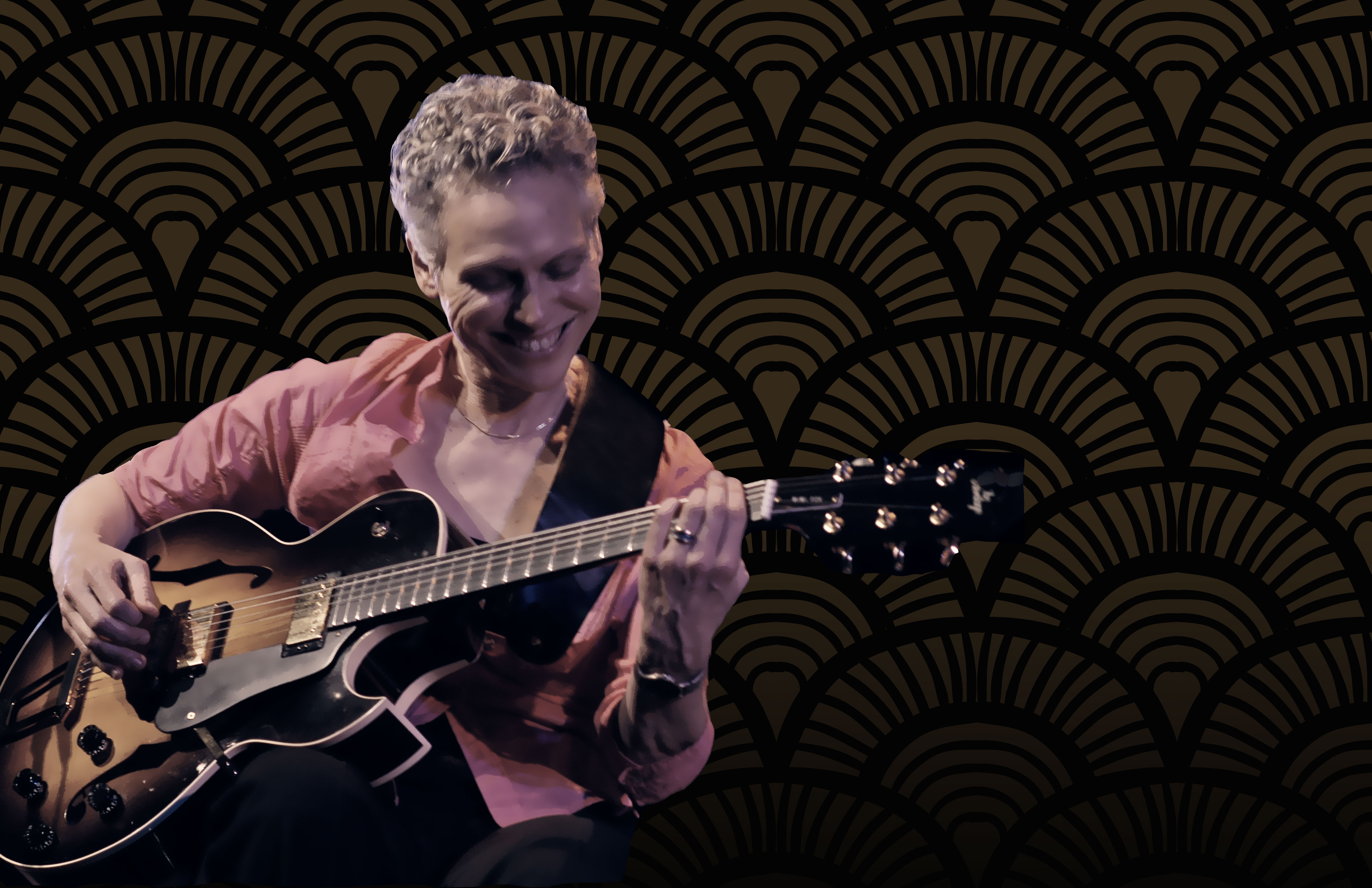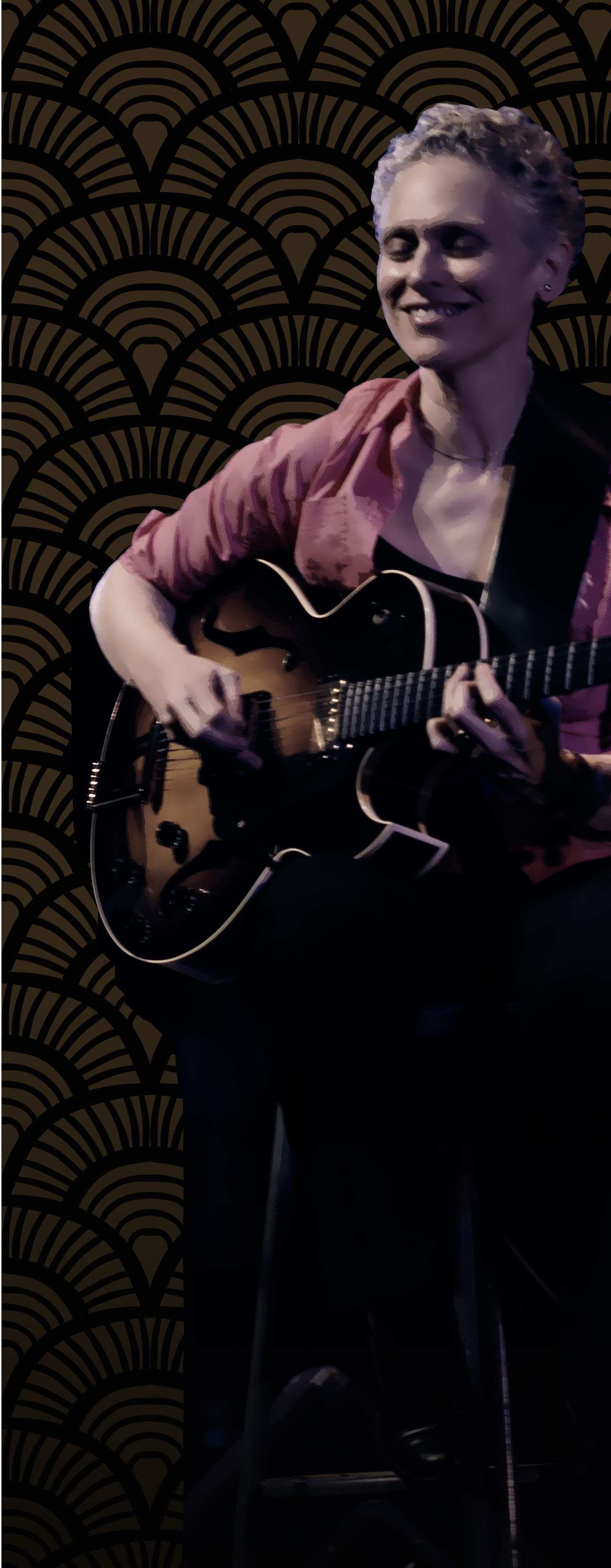You meet a lot of people at NAMM. Friends introduce you to their friends, who in turn introduce you to their friends, and so it goes for five straight days and nights. It’s an analog social network frenzy, which in our case thankfully skews heavily to guitar artists and educators and so I’m the proverbial kid in a candy store.
One day while strolling the aisles, I shook hands with George Benson (haven’t washed that hand since…just kidding), two hours later met Pat Martino (working on a project with him as I write this), and then just before closing time, I was introduced to one of my personal favorites, Mimi Fox. Boom!
Dave Wish, uber-cool founder of Little Kids Rock, introduced us and I’ve thanked my lucky stars ever since. I’m thankful for all of the jazz courses that we’ve collaborated on. I’m thankful for her friendship and selfless support of our charitable activities. Most of all, I’m thankful for the music she makes that keeps jazz vibrant and very much alive.
A couple of years ago, Mimi called to say she had an upcoming trio gig at the Palladium, a historic venue right in our backyard. With an opportunity like that knocking on our front door, we hit the drawing boards and blueprinted Mimi’s next TrueFire course — Jazz Performance.
We filmed the show with a 4-camera crew and if you’re one of our jazz students, you’ve likely seen the performance footage, as well as the companion lessons that Mimi filmed with us at a later date.
What you probably have not seen are Mimi’s answers to a series of questions that I surprised her with during a break at soundcheck. The video segments from that interview can be found, in the bonus section, on “Live at the Palladium,” a DVD that Favored Nations published using our footage. I’ve inserted text transcriptions of my favorite responses throughout this article.
Some artists pick jazz as their genre of choice because it’s challenging, deep and complex. Some choose jazz because they love the colors and textures found in the music. Some artists have no choice — jazz chooses them inexplicably, and such is the case with Mimi Fox.
A very well-known and widely respected jazz pianist attended that show at the Palladium. I sat with him during the first set, during which he turned to me and whispered, “She’s the real deal.” I couldn’t agree more.

“I love Jazz. It’s such a beautiful combination; rooted in the blues and early-Dixieland, as well as swing styles and it’s evolved through so many transformations. Jazz is complex, beautiful, but also very rhythmic and compelling music.”
“Ultimately I think what moves people, as an artist, is when you’re being vulnerable and it’s a very hard thing to do because it’s like you’re walking on stage naked. Every time you step on stage, you’ve really got to go for it, you’ve got to let people in, and that’s a tall order.”
“Jazz musicians have different relationships with their audience, I’ve always been a very synergetic performer, and I respond when I feel the audience is with me. You know that you’re touching people and I think for me, the type of musician and performer I am spurs me on and makes me want to give even more, to be more vulnerable and to really go for things. You feel like people are basically saying ‘I hear you, I’m with you, and I’m digging what you’re doing’ and then it becomes almost a symbiotic kind of relationship between myself and the audience.”
“You’re improvising, spontaneously telling a story, so I also have to think about where I’m going and where this will go next because when I’m playing one figure I have to know that another phrase is going to follow that. So there’s a lot of things subconsciously operating on different levels.”
“To me the most fun that you can have on the bandstand is when there’s communication happening between everyone, not everybody all at once, but between a drummer and I, a bass player and I, or a horn player and I. Whatever’s going on is what makes something’s special happen, it’s all about communication and listening to each other. It’s all about interactiveness and communication that makes Jazz so enduring. It’s in the moment; an extemporaneous, spontaneous creation, there’s no preparation — well, other than a gazillion years of practice.”
“I’ve lived through some hard things in my life and that comes out in my music, usually in some tender very emotional ballad that I will have written about somebody or something that happened. That’s my job as an artist, I’m a human sponge picking up things, taking information in, and trying to create something beautiful, edgy, or exciting. Whatever it may be, I try and make it eloquent out of those emotions and those experiences.”
“People ask me as a composer what inspires me. It’s usually people I love, places I’ve been, or experiences I’ve had, this is what I’ll write songs about. So I could be in Tokyo at an art museum looking at Japanese art from the fifth century and I can be moved. I always tell people that I experience the world through my ears. I hear music when I feel things, I hear the music run though me and that’s how I experience the world.”



